There are several ways that populations of fungi can become resistant to fungicides, these include:
1. Altered target site. A fungicide has a specific target site where it acts to disrupt a particular biochemical process or function. If this target site is somewhat altered, the fungicide no longer binds to the site of action and is unable to exert its toxic effect. This is the most common mechanism that fungi use to become resistant. See the example below.
(i) 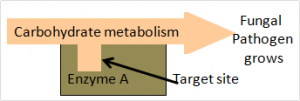 Enzyme A is necessary for carbohydrate metabolism in fungi. The target site is the point where the enzyme is used. Enzyme A is necessary for carbohydrate metabolism in fungi. The target site is the point where the enzyme is used. |
(ii) 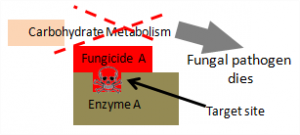 Fungicide A interferes with carbohydrate metabolism by filling the target site of Enzyme A. Fungicide A interferes with carbohydrate metabolism by filling the target site of Enzyme A. |
(iii) 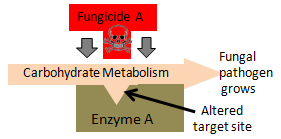 In resistant fungi, a part of the site is altered preventing the fungicide from fitting, but allowing carbohydrate metabolism to occur. In resistant fungi, a part of the site is altered preventing the fungicide from fitting, but allowing carbohydrate metabolism to occur. |
2. 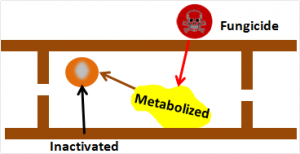 [Fungal cell] |
3. 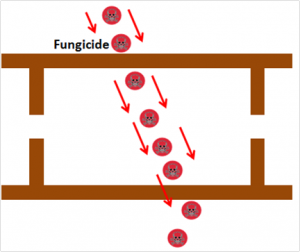 [Fungal cell] |
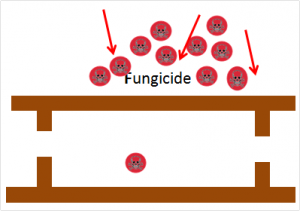 [Fungal cell] |
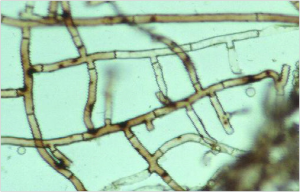 Close-up of fungal hyphae; showing cell walls |
Compiled by Dr. Wayne Buhler, PhD
